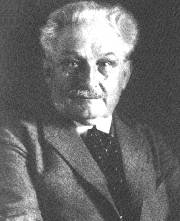Leos Janacek Biography - A Very Quick Guide
Artist:
Leos Janacek
Born:
July 3, 1854
Died:
August 12, 1928
Who Was Leoš Janáček?
Leoš Janáček (1854–1928) was a Czech composer whose music captures the rhythms and inflections of everyday speech. His works are known for their earthy realism, emotional intensity, and deep connection to Moravian folk music. Though he achieved fame late in life, Janáček is now regarded as one of the great composers of 20th-century music.
What Is Janáček Most Famous For?
Janáček is best known for his operas, which broke away from the lush Romanticism of his contemporaries to create something leaner, sharper, and more truthful. His most celebrated works include Jenůfa (1904), The Cunning Little Vixen (1924), Katya Kabanova (1921), and The Makropulos Affair (1926). As well as opera, he composed the powerful Sinfonietta, Glagolitic Mass, and Taras Bulba- each marked by vivid color and rhythmic vitality.
What Inspired Janáček’s Music?
Janáček drew inspiration from the speech patterns, songs, and dances of his native Moravia. He was fascinated by how people naturally express emotion through the voice, and he meticulously transcribed everyday speech into musical notation. This gave his melodies their distinctive, irregular contours, effectively language turned into song. Later in life, his relationship with Kamila Stösslová, a much younger woman, sparked a burst of creativity that produced many of his greatest works.
When Was Janáček Born?
He was born on July 3, 1854, in Hukvaldy, a small village in what is now the Czech Republic. The son of a schoolteacher and choirmaster, Janáček showed musical talent early and went on to study in Prague, Leipzig, and Vienna before returning to Brno.
How Did Leoš Janáček Die?
Janáček died on August 12, 1928, at the age of 74, from pneumonia. He fell ill while visiting Kamila Stösslová and her son at a spa town.
10 Facts About Leoš Janáček
He collected and studied hundreds of Moravian folk songs. His opera Jenůfa took ten years to gain recognition. He often reused material from abandoned works in new compositions. His orchestral piece Sinfonietta was dedicated to the Czechoslovak Army. His success as a composer came only in his 60s. He was deeply influenced by the landscape and language of Moravia. He kept a passionate, unrequited correspondence with Kamila Stösslová. He was a skilled organist and choral conductor early in his career. His music inspired later composers such as Britten, Ligeti, and Adams.
Leoš Janáček (1854–1928) was a Czech composer whose music captures the rhythms and inflections of everyday speech. His works are known for their earthy realism, emotional intensity, and deep connection to Moravian folk music. Though he achieved fame late in life, Janáček is now regarded as one of the great composers of 20th-century music.
What Is Janáček Most Famous For?
Janáček is best known for his operas, which broke away from the lush Romanticism of his contemporaries to create something leaner, sharper, and more truthful. His most celebrated works include Jenůfa (1904), The Cunning Little Vixen (1924), Katya Kabanova (1921), and The Makropulos Affair (1926). As well as opera, he composed the powerful Sinfonietta, Glagolitic Mass, and Taras Bulba- each marked by vivid color and rhythmic vitality.
What Inspired Janáček’s Music?
Janáček drew inspiration from the speech patterns, songs, and dances of his native Moravia. He was fascinated by how people naturally express emotion through the voice, and he meticulously transcribed everyday speech into musical notation. This gave his melodies their distinctive, irregular contours, effectively language turned into song. Later in life, his relationship with Kamila Stösslová, a much younger woman, sparked a burst of creativity that produced many of his greatest works.
When Was Janáček Born?
He was born on July 3, 1854, in Hukvaldy, a small village in what is now the Czech Republic. The son of a schoolteacher and choirmaster, Janáček showed musical talent early and went on to study in Prague, Leipzig, and Vienna before returning to Brno.
How Did Leoš Janáček Die?
Janáček died on August 12, 1928, at the age of 74, from pneumonia. He fell ill while visiting Kamila Stösslová and her son at a spa town.
10 Facts About Leoš Janáček
Top Pieces on 8notes by Leos Janacek
